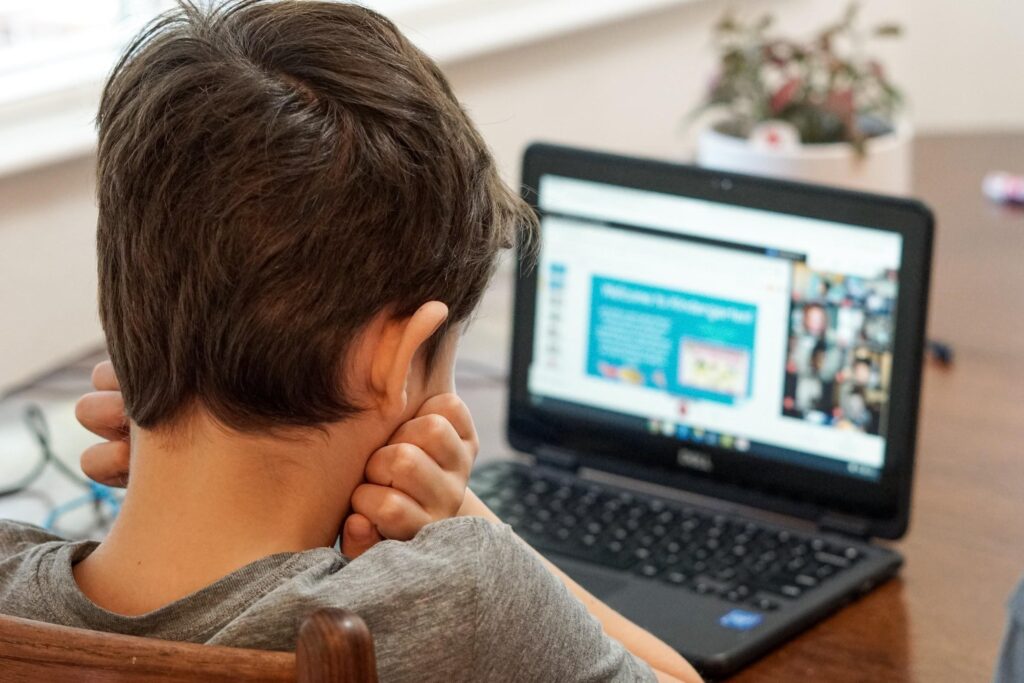How to Make Online Learning Safe
Aug 23, 2022
Notice: Undefined variable: cofig in /var/www/icrowdmarketing/submission/news.php on line 386
Notice: Trying to get property 'poweredby' of non-object in /var/www/icrowdmarketing/submission/news.php on line 386
iCrowdMarketing

The COVID-19 pandemic altered the world in so many ways. From the economy to healthcare, no sector was spared. However, even though lives are gradually returning to normalcy, one sector has been permanently changed - education.
Although remote learning has been around for the last few years, it became more prevalent since the rise of the pandemic and it doesn't seem to be going away anytime soon. Students can easily learn math for 3rd grade or highschool algebra online, and all they need is a computer and internet connection.
While this is great, the practice raises a new concern for both teachers and students alike - safety. The internet might be a hub of knowledge but it houses more threats than we know. So, how can you make online learning safe? Let's find out.
Tips for Making Online Learning Safe
Set restrictions
It's fun to post on social media, no doubt. However, teachers, parents, and students need to be cautious about what they post. As a teacher or a parent, you should keep an eye out on what your kids post. Social media posts should be restricted to only appropriate pictures or texts with no personal information. Teach kids that information such as their house address, school, etc are private and should be kept that way. This way, they can avoid stalkers, harassers, and hackers.
However, this tip isn't limited to helping students only. Parents and teachers have to play their own part to ensure online learning safety. Be cautious about what you post on social media. If you do decide to share anything, ensure that you aren't leaking your students' personal information.
In the same vein, do not post your email address or social security number online as these are the easiest ways to lure hackers. Hackers can easily guess your password through tiny clues such as your birthday, pet name, and so on.
Be wary of phishing emails
Hackers are everywhere. They lurk in the dark recesses of the web, trying to gain access into your account. They may pop up as ads in math games or through friend requests on Facebook. However, one of their most common modes of operation is through emails.
Often, hackers may send phishing emails disguised as genuine ones. These emails typically contain a link that grants them access to your data once you click on it. Thus, it's important to teach your students how to spot fake emails. Fake email addresses are often very similar to the school's email address. For instance, if your school's email address is href="mailto:xyzschool@gmail.com">xyzschool@gmail.com, the hacker's email address might be href="mailto:xyz.school@gmail.com">xyz.school@gmail.com. Almost impossible to tell the difference, right? Therefore, you'll need to be extra careful when opening emails.
Teach your kids not to click on any links unless they're sure it's from you or the school. This way, they can learn safely without falling prey to hackers.
Fight against cyberbullying
In 2005, the Cyberbullying Research Center website was launched. Since its creation, many kids and parents have used this platform to cry out against cyberbullying and shed some light on their experiences. In fact, over 35% of students say that they have been cyberbullied at some point.
The truth is that cyberbullying is a ravaging monster. We can't wish it away or pretend like it doesn't exist. As a teacher or parent, you should take a definite stand against this phenomenon. Talk to your students and let them know that they can confide in you if they're being bullied. More importantly, teach children to be kind to everyone around them and educate them on the dangers of cyberbullying. This way, you can prevent them from bullying others.
Educate students and parents
Although you can pull your weight as a math teacher, online safety isn't a one-man job. Everyone needs to chip in, from parents to students and every other staff member.
For instance, you could advise the IT department to take pre-emptive measures to block dangerous websites and install anti-malware programs. This way, students will not stumble upon inappropriate content or become vulnerable to hackers.
But that's not where it ends. Reach out to parents and educate them on online learning safety. You can't see what they do at home and thus, it's up to the parents to take the baton. Teach them how to secure their phones and monitor their child's internet activities.
More importantly, educate them on the importance of setting screen time boundaries. You certainly don't want your students to become addicted to their screens.
Install monitoring software on school laptops
Another great way to ensure internet safety is by installing monitoring software on the kids' school laptops. More often than not, children may accidentally stumble upon inappropriate content and then go down a rabbit hole from there.
Fortunately, there are tons of monitoring software programs that can easily detect risky online behavior and send you an alert. This way, you can always intervene and nip it in the bud before it escalates.
Final Thoughts
Let’s admit it: ensuring safe online learning isn't always the easiest task. There are so many measures you need to put in place to ensure that your kids are safe when learning. However, these tips outlined above will set you on the right track.
Remember, online safety doesn't apply to kids alone. When navigating the web, use these tips to stay safe. Good luck!
Tags: English